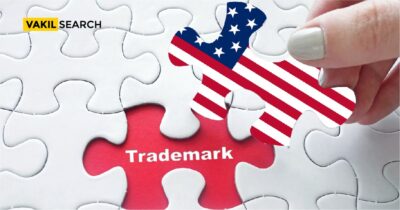If you’re planning an expansion into the USA, there is one thing you must do right away, which is to register your trademark in the United States to ensure that your brand is protected as you embrace the power of globalization.
Is Trademark Registration in India Valid in the USA?
Brand protection is territorial, meaning it only applies within the borders of the country where the trademark is registered. Businesses wishing to extend their operations overseas must ensure that their trademarks are shielded in the countries where they plan to expand as well. Therefore a trademark registration in India is not valid in the USA.
If you are an Indian corporation apply for trademark online in the United States, you must first register your trademark in India. This is because you will be seeking a US trademark registration based on your Indian trademark registration.
Trademark Registration in the USA: Role of USPTO
The United States of America has both federal and state trademark laws, as well as a centralised regulating institution known as the United States Patent and Trademark Office (USPTO).
You can check trademark availability with Vakilsearch’s free Trademark Search tool before registering a trademark.
The United States Patent and Trademark Office (USPTO) is a U.S. Department of Commerce that is a largely fee-funded organisation. Likewise, the USPTO is responsible for granting patents to protect inventions as well as registering trademarks and service marks for products and services.
|
Trademark Registration in the USA: Documents Required
The following is a list of details and papers that must be provided for trademark registration in the United States:
- The applicant’s name, address, and signature, as well as the entity type
- The category of goods and services for which the trademark is registered
- The legal grounds for filing
- The logo/trademark that must be registered as a sketch or a digital picture
- The trademark’s description and specifics
- Application fees
Eligibility for Trademark in the USA
The beauty of trademark registration in the USA lies in its inclusivity. Any individual or entity that claims ownership of a brand can apply for trademark registration. This encompasses a wide array of categories, including:
– Individual
– Corporation
– Limited Liability Company
– Partnership
– Limited Partnership
– Joint Venture
– Sole Proprietorship
– Trust
It’s worth noting that applying for a trademark as an individual is preferable. This approach circumvents potential issues that may arise if a business changes its name or ceases operations, which could invalidate the trademark. This strategic decision ensures your trademark’s durability and security.
Advantages of Trademark Registration
The advantages of trademark registration in USA is multifaceted, bestowing a range of benefits upon your brand:
- Prevent Confusion: Through thorough trademark availability searches, registration thwarts potential conflicts before they arise, preventing others from using confusingly similar marks.
- Government Backing: Trademark registration empowers the U.S. government to refuse registrations for similar marks, essentially leveraging governmental authority to curb infringement.
- Nationwide Recognition: Upon registration, your mark is treated as if it’s used nationwide from the application date. This is pivotal in a system where “first use” typically prevails, ensuring your rights extend beyond a specific geographic area.
- Notice of Ownership: Registration serves as a national declaration of ownership on the registration date, dissuading others from adopting the same mark.
- Evidentiary Power: Registration becomes evidence of mark validity and ownership for listed goods and services, offering heightened protection over time.
- Use of ® Symbol: Upon registration, you gain the privilege to use the ® symbol, underscoring your commitment to brand preservation and authenticity.
- Legal Recourse: Registration grants you the right to sue in court, potentially leading to exemplary damages and attorney fees, offering a powerful deterrent against infringement.
- Customs Support: Recorded registration enables U.S. Customs and Border Protection to prevent infringing imports, effectively stopping violations at no additional cost to you.
Period of Validity and Renewal
In the USA, a registered trademark enjoys legal protection for ten years from its certified registration date. To keep your trademark active, additional official fees are payable to the U.S. Ministry of Economy after the initial ten-year period.
If the renewal isn’t pursued immediately, a grace period of six months is granted. It’s essential to note that failure to use the trademark for five consecutive years in the USA could render it vulnerable to cancellation by interested parties.
Trademark Law in the USA
Trademark protection in the United States traces its roots back to colonial times, and it wasn’t until 1870 that Congress established a federal trademark regime. The Lanham Act, a pivotal legislation, bestowed regulatory authority over trademark registration upon the U.S. Patent and Trademark Office (USPTO).
The legal landscape for trademarks is dual-fold, encompassing both state and federal law. While state common law was historically the bedrock of trademark protection, federal law, particularly the Lanham Act, has come to dominate the field.
The PTO administers trademarks and patents, and rights can be acquired either through first-to-register or first-to-use principles. Registered marks bear the ® symbol, while unregistered ones are marked with “Tm” or “Sm” for service marks.
Trademark Filing Basis (SEC. 1A, 1B, 44D, 44E)
When pursuing trademark registration in the USA, it’s vital to determine the filing basis, which specifies the grounds for filing. Four bases exist, catering to different scenarios:
- Use in Commerce
- Intent to Use
- Foreign Application Basis (Section 44(d))
- Foreign Registration Basis (Section 44(e))
Trademark Class in U.S.A
Additionally, trademarks are classified into classes for better organization. These classes encompass a range of goods and services, totalling 45 categories, 34 for products and 11 for services, as defined by the U.S. Patent and Trademark Office (USPTO).
Goods
Class 01 Chemicals substances products
Class 02 Paints, Coatings & Pigments
Class 03 Cleaning Products, Bleaching & Abrasives, Cosmetics products
Class 04 Fuels, Industrial Oils, and Greases Illuminates
Class 05 Pharmaceutical, Veterinary Products, Dietetic product
Class 06 Metals, metal castings, Locks, Safes, Hardware products
Class 07 Machines and Machine Tools and Parts
Class 08 Hand Tools and Implements, Cutlery products
Class 09 Computers, Software, Electronic instruments, & Scientific appliances
Class 10 Medical, Dental Instruments, and Apparatus
Class 11 Appliances, Lighting, Heating, Sanitary Installations
Class 12 Vehicles
Class 13 Firearms, Explosives and Projectiles
Class 14 Precious Metal ware, Jewellery,
Class 15 Musical Instruments and supplies products
Class 16 Paper, Items made of Paper, Stationery items
Class 17 Rubber, Asbestos, Plastic Items
Class 18 Leather and Substitute products
Class 19 Construction Materials (non-metallic)
Class 20 Furniture, Mirrors products
Class 21 Crockery, Containers, Utensils, Brushes, Cleaning Implements
Class 22 Cordage, Ropes, Nets, Awnings, Sacks, Padding
Class 23 Yarns, Threads products
Class 24 Fabrics, Blankets, Covers, Textile products
Class 25 Clothing, Footwear, and Headgear products
Class 26 Sewing Notions, Fancy Goods, Lace and Embroidery products
Class 27 Carpets, Linoleum, Wall and Floor Coverings (non-textile) products
Class 28 Games, Toys, Sports Equipment
Class 29 Foods – Dairy, Meat, Fish, Processed & Preserved Foods
Class 30 Foods – Spices, Bakery Goods, Ice, Confectionery products
Class 31 Fresh Fruit & Vegetables, Live Animals,
Class 32 Beer, Ales, Soft Drinks, Carbonated Waters products
Class 33 Wines, Spirits, Liqueurs products
Class 34 Tobacco, Smokers Requisites products
Services
Class 35 Advertising, Business Consulting
Class 36 Insurance, Financial
Class 37 Construction, Repair, Cleaning
Class 38 Communications
Class 39 Transport, Utilities, Storage & Warehousing
Class 40 Materials Treatment, Working
Class 41 Education, Amusement, Entertainment, Reproduction
Class 42 Scientific and technological services and research and design relating thereto
Class 43 Services for providing food and drink; temporary accommodations.
Class 44 Medical services; veterinary services; hygienic and beauty care for human beings or animals
Class 44 Medical services; veterinary services; hygienic and beauty care for human beings or animals
Trademark Protection in USA: A Necessity
Once your trademark is registered with the USPTO, it’s essential to guard it against infringement and misuse. While the USPTO prevents similar trademarks from being registered, some times they may slip up.
Staying vigilant and taking legal action against potential infringements is necessary for optimum brand preservation.
Trademark Registration in the USA: Madrid Protocol
If you wish to expand your business across multiple nations, but cringe at the tedious task of registering your trademark in each nation separately. Moreover, the Madrid System, which is maintained and regulated by WIPO (World Intellectual Property Organization) in Geneva, Switzerland, is the ideal option for you.
A single application must be submitted to acquire a trademark registered in the coalition of countries under this agreement. Further, to obtain trademark registration in US through this protocol the MM2 form application must be submitted through the WIPO website. After that, the paperwork must be sent in hard copy to the US trademark office.
Are Trademark, Patent, and Copyright the Same?
No, they are distinct forms of intellectual property protection. Trademark pertains to brand identity, patent covers inventions, and copyright safeguards creative works.
How Can I Check the Status of a Trademark Application?
You can monitor the status of your trademark application through the U.S. Patent and Trademark Office's online portal with the help of Vakilsearch experts.
On What Grounds Can My Trademark Be Refused?
Trademarks can be refused for various reasons, including likelihood of confusion, being descriptive, or being deceptive.
Read more;-










